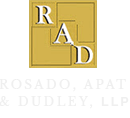What is machine safeguarding?
Do you work with any type of machinery? If so, you probably realize that an accident could happen at any time. If it does, there is a chance that you could be seriously injured or even killed on the job.
Some types of injuries are commonly associated with machines. These include crushed limbs, blindness and severed fingers.
While there is no way to guarantee that an accident won’t happen in the future, companies with a dedication to machine safeguarding are in a much better position in regard to employee safety.
Every company should keep this in mind: any type of machine that could cause injury is one that should be safeguarded.
Generally speaking, there are three areas in which machine safeguarding is important:
- Point of operation. This is the point where the work is performed, such as shaping or cutting.
- Power transmission. This includes all parts of the machinery that transmit energy in order for the work to be performed. These components can include belts, pulleys, and chains among others.
- All other moving parts. This includes the parts of the machine that move while in operation, such as feed mechanisms.
Even though most companies are familiar with the benefits of machine safeguarding, there are times when something slips through the cracks. If you work with machines on a daily basis, make sure that you know which safeguarding strategies are in place. Along with this, don’t hesitate to make note of anything that can be done to improve the safety of your work environment.
Get Serious Representation For Your Workplace Accidents
If you are involved in a workplace accident, stop what you are doing to receive immediate medical attention. Your health is more important than anything else.
Source: U.S. Department of Labor, “Chapter 1 – Basics of Machine Safeguarding,” accessed July 26, 2016









